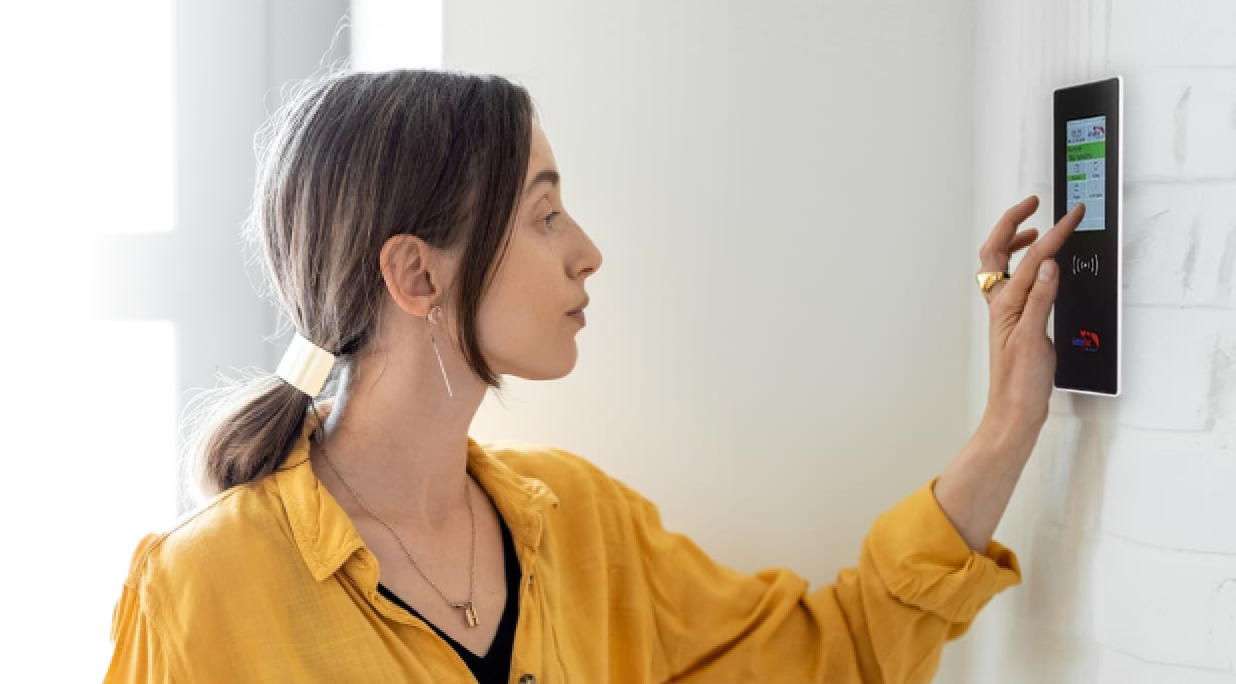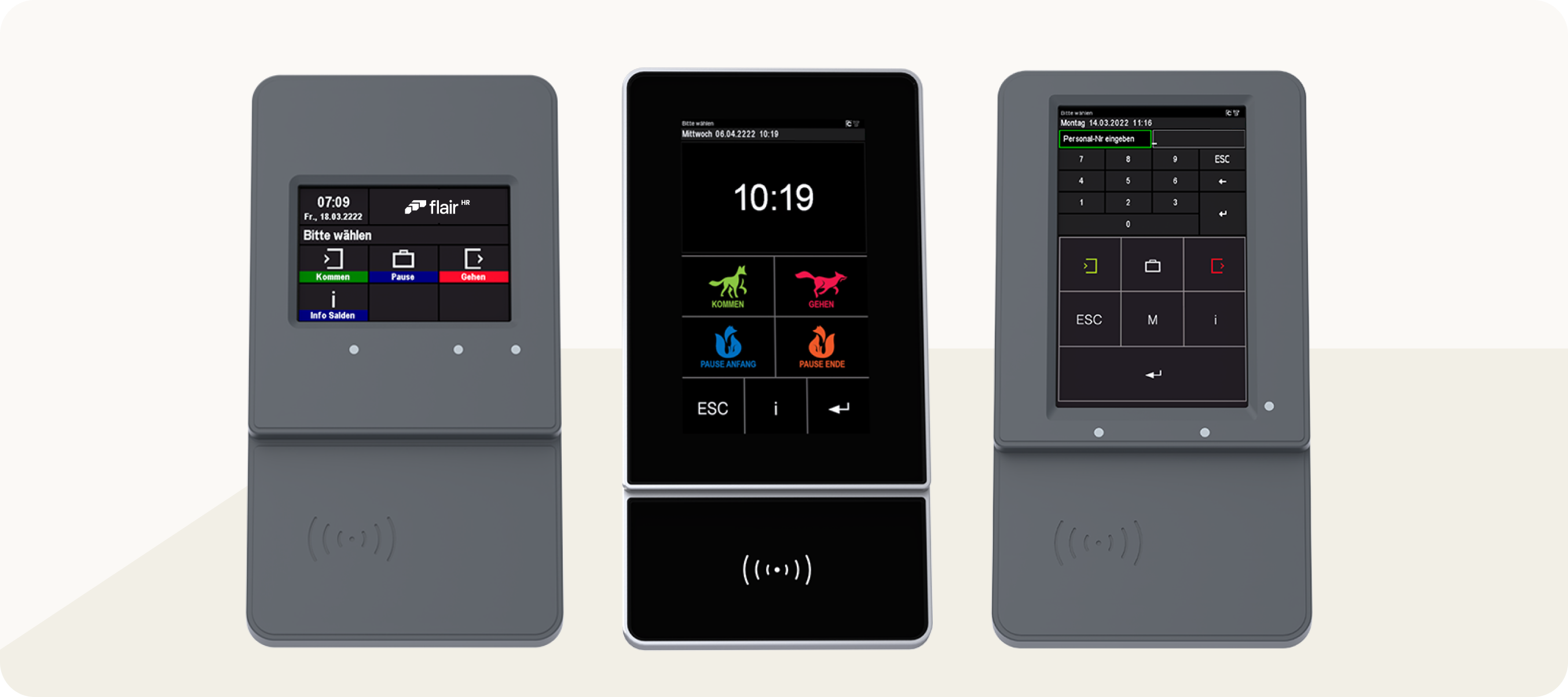How To Improve Employee Motivation in the Retail Sector
Get an insight into what retail workers, managers, and the human resources team can do to ensure job satisfaction and motivation in retail businesses.
- 18 Jun 2024
- Max 7 min read
The Number One HR Solution on Salesforce
Methods of employee time tracking have come a long way over the years. From the old-school punch cards that you may remember from TV shows to cloud-based time-tracking apps, employers today have a wide range of options for recording work hours.
And it is just as well: keeping an accurate record of working time and attendance has never been as important as it is now. In many countries, time tracking has become a compliance requirement. Most notably, in 2019 the European Court of Justice (ECJ) ruled that all employers must establish an “objective, reliable and accessible system” for keeping track of employees’ daily working time. Furthermore, time tracking is necessary to verify compliance with regulations like the European Working Time Directive (EWTD) and the Fair Labor Standards Act (FLSA) in the US.
Besides compliance, tracking employee time can improve productivity and engagement, while keeping conditions fair for the employees and preventing burnout. In this article, we’ll explain the pros and cons of various time clock systems and examine physical time tracking devices that combine the benefits of traditional punch clocks and modern automated software.
Manual punch clocks have been a staple in shift work for decades. Using these traditional systems, employees punch time stamps onto pieces of paper, known as time clock cards. This gives employers a paper-based record of the times when employees clocked in, clocked out, and took breaks.
While these time card machines might seem outdated, a Workpuls survey found that around 38% of US employers were still using paper timesheets and punch cards in 2019. Popular manufacturers include Pyramid Time Systems, Lathem, and uPunch.
These manual clocking-in systems may be relatively simple and inexpensive, but they come with a hidden cost. ‘Buddy punching’ is the practice of employees sharing their time cards with colleagues to clock in earlier or clock out later than their actual working times. This impacts productivity and the company’s bottom line; the US Bureau of Labor Statistics estimated that buddy punching cost US businesses $373 million in 2017.
Another downside to punch clocks is that payroll needs to be calculated manually based on the paper punch cards. Not only is this time-consuming but it can also lead to errors. That’s not to mention the stack of dusty old cards you’ll need to find space to store for compliance reasons.
For many employees, Excel or Google Sheets are part of their daily reality. Every day, they enter their working times and break times into a timesheet. The spreadsheet contains formulas that calculate their total time worked, remaining weekly hours, and overtime.
For small businesses in particular, this method of timekeeping has its place. It’s cheap, digital, and unlike punch clocks, it does most of the calculations for you. Depending on their needs, companies can make it as simple or complex as they want, adding cells for hourly rates or creating separate timesheets to track hours spent on specific projects or clients.
However, despite its prevalence, spreadsheet-based time tracking isn’t the best option available. First of all, it’s not entirely reliable. It’s easy to make a mistake when entering working times or even to forget it completely. Moreover, unlike physical clocking-in devices, spreadsheets don’t account for an employee’s physical presence at the place of work. This makes Excel-based time tracking less suited to hospitality and manufacturing businesses.
Ultimately, the outcome is only as good as the data gathered. Unreliable or incomplete time entries will lead to inaccurate reporting and subsequently, inaccurate payroll. Besides, while programs like Excel and Google Sheets are familiar to most people, there can be such a thing as too many spreadsheets. Organizations of ten or more people will quickly find themselves outgrowing this method of time tracking as they get swamped in rows, columns, and cells.
Paper time cards might not be compatible with modern business needs, but time clocks certainly do still have a place where the employee’s physical presence needs to be verified. Modern time clock machines use various technologies to confirm an employee’s attendance and prevent buddy punching:
These modern time and attendance systems are often linked to software that provides a real-time overview of timesheets and overtime. Time clock apps and software may also be linked to payroll systems to simplify the monthly accounting.

At flair, we understand the pros and cons of each method of time tracking. Whether you opt for trust-based clocking in via software or mobile app, or a more traditional, presence-based approach, the goal is to minimize admin while ensuring accuracy.
Our Salesforce-powered HR software combines the best of all these options, giving you the freedom to implement the time-tracking method that works for you. Employees can clock in and out themselves via our browser-based Employee Hub or flair mobile app for iOS and Android. This can be a convenient option for companies operating in multiple locations or with a flexible or remote work policy.
Alternatively, for companies that require presence-based time tracking, but don’t want to install outdated punch clocks, we’ve got the ideal solution. flair integrates seamlessly with modern clocking-in machines, which use RFID technology or fingerprint scanning to verify an employee’s clocking-in time. The time-tracking terminals are sleek, easy to set up, and simple to use. They are ethernet and WiFi compatible, instantly logging all time entries in the flair software.

As a result, you have a reliable method of time tracking that’s not only convenient for HR managers and team leaders, but also for employees. They simply tap their key fob or press their finger on the way into work, and again when they’re taking a break or going home. Managers get a clear and accurate overview of all time entries, facilitating compliance with working time regulations and enabling more detailed reporting on attendance. This eliminates a ton of paperwork, admin, and spreadsheets, so you can focus on more strategic tasks.
Simplified Compliance: Regulations require employers to maintain a record of timesheets. Depending on the locations your business operates in, the retention period can range from two years to as many as seven years. That’s a whole lot of paperwork to file away. With time-tracking software, you save time, costs, and effort, while maintaining clear, compliant records.
Reduced ‘Time Theft’: Some 43% of shift workers have recorded inaccurate working hours, costing businesses in the US approximately $400 billion per year. By combining time-tracking software with a physical time-tracking system, you have a reliable way of verifying employee clock-in and clock-out times.
Integration With Payroll Software: Unlike traditional punch clocks, modern software-based time-tracking systems can be easily integrated with payroll. flair integrates with a range of payroll systems to streamline the pay process and reduce manual error.
Customizable Time Tracking Rules: Another advantage of time-tracking software is the ability to set rules on maximum working time, minimum required breaks, and overtime compensation. With flair, you can configure these rules to ensure compliance with the applicable regulations in the countries where your business operates.
Whether you need a user-friendly mobile app for time tracking or a RFID clocking-in machine, we’ve got you covered. Additionally, flair can do so much more than just track time. Depending on your needs, we can also set you up with a powerful, Salesforce-integrated recruitment solution, absence management, performance management, and more.
Ready to save time on time tracking? Book a demo with our product experts to find a physical time tracking solution that meets your organization’s needs, and much more.
Join flair’s newsletter to receive the latest tips & trends in the HR world.
